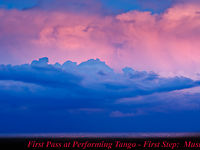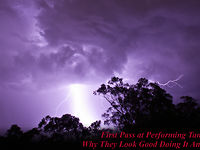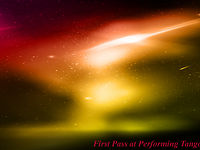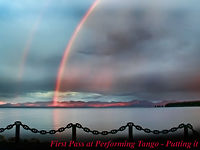执行探戈的第一通 - Choreographic Structure
It really is an 8 second world. If you read literature written in the 19th century, the sentences tend to be longer and they read slower. The thoughts take time to evolve and are frequently more convoluted. If you watch great movies that were produced 4 or 5 decades ago, and you time the cuts, which we have done, the time between cuts is consistently longer than it is today (they change today roughly every 8 seconds).
- Today, to hold an audience, you really need very rapid changes of tone, of timing, of mood.
- Props can help, but understand that the audience will get used to the props very rapidly.
- Changes of levels help: you have the air, dancing standing on the floor, or being very close to the floor.
- But, whatever you're doing, you need to change to something that feels radically different much sooner than seems sensible.
- 艺术家姓名:
- Astor Piazzolla
- 歌名:
- Adiós Nonino
- 相册标题:
- RCA Victor 100 Años - Astor Piazzolla
- 艺术家网站:
- http://www.piazzolla.org
(Paraphrased from wikipedia): Piazzolla's tango was distinct from the traditional tango in its incorporation of elements of jazz, its use of extended harmonies and dissonance, its use of counterpoint, and its ventures into extended compositional forms. As Argentine psychoanalyst Carlos Kuri has pointed out, Piazzolla's fusion of tango with this wide range of other recognizable Western musical elements was so successful that it produced a new individual style transcending these influences.
- 00:05
- Now, as you think about choreographing to the music, the first thing...
- 00:08
- Sometimes, away from the music, but general choreographic structure, is that you want to create variety.
- 00:15
- So, for example, when a dance starts, I might have some dramatic introduction.
- 00:21
- Let me get a chair, to symbolize the woman.
- 00:23
- And, as that dramatic introduction happens,
- 00:27
- That'll eat up time. And it will be varied. And it will be interesting. You'll like, "How cool is that?"
- 00:33
- So, there's the woman in the chair.
- 00:37
- You walk up to her.
- 00:43
- You caress her hair. You're here. You rise.
- 00:50
- You know, so you have this beginning thing, which is very cool. And the audience looks, and is like, "Wow, how cool!"
- 00:55
- And then, after that, you kick the chair away.
- 00:59
- Whatever it is. And, then you start to dance.
- 01:04
- And, maybe you do lots of fancy cool steps, sacadas and enganches, enganches and boleo, blah-blah-blah-blah-blah.
- 01:12
- And the audience is, "Look, how cool is that!" We like that when the audience says that.
- 01:16
- And then, after that, well, you need something more to add drama.
- 01:21
- So, maybe, now you have some sort of big trick, where she's in the air. We had a few things about lifts.
- 01:28
- And then, after they're, like, drooling over your amazing lifts, then you add in some acting. And then you repeat.
- 01:36
- So, the point is, that you want to have a section, which is, maybe, 20 to 30 seconds, err on the side of low,
- 01:43
- For acting. Oh, sorry, for an introduction.
- 01:47
- And then, after your introduction, you want a section that's 20 to 30 seconds, that's really cool, for a different reason.
- 01:52
- So, instead of being sort of separate dramatic acting thing, sort of movement, you have cool tango steps.
- 01:59
- And then you have a section that's 20 to 30 seconds, that's really cool, but for a new reason.
- 02:03
- Maybe, this one's really cool because you have a great lift.
- 02:07
- You know, or a couple great lifts. And then, maybe you have another section, and that's really cool.
- 02:12
- You see the pattern, everything is really cool, but for different reasons.
- 02:14
- So, if I do the exact same thing for 45 seconds, even if it's really cool for the first 20 seconds,
- 02:21
- The last 20 seconds you'll be like, "I've had enough. Show me something new".
- 02:26
- So, when you're choreographing, it helps if you find music that is very varied. We'll have a chapter on that.
- 02:30
- And... Even if the music is not varied, you go away from the music, and then you come back.
- 02:35
- The music is going, "Ba-da-da-da-da"; you're doing, "Huh". You know, you sort of emote slow passion.
- 02:43
- And then, later on, you can go, "Ba-da-da-da-da". And, the audience's eye is refreshed.




